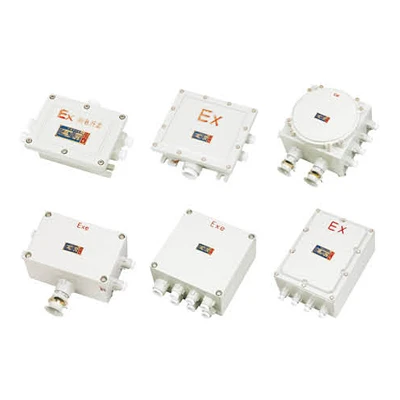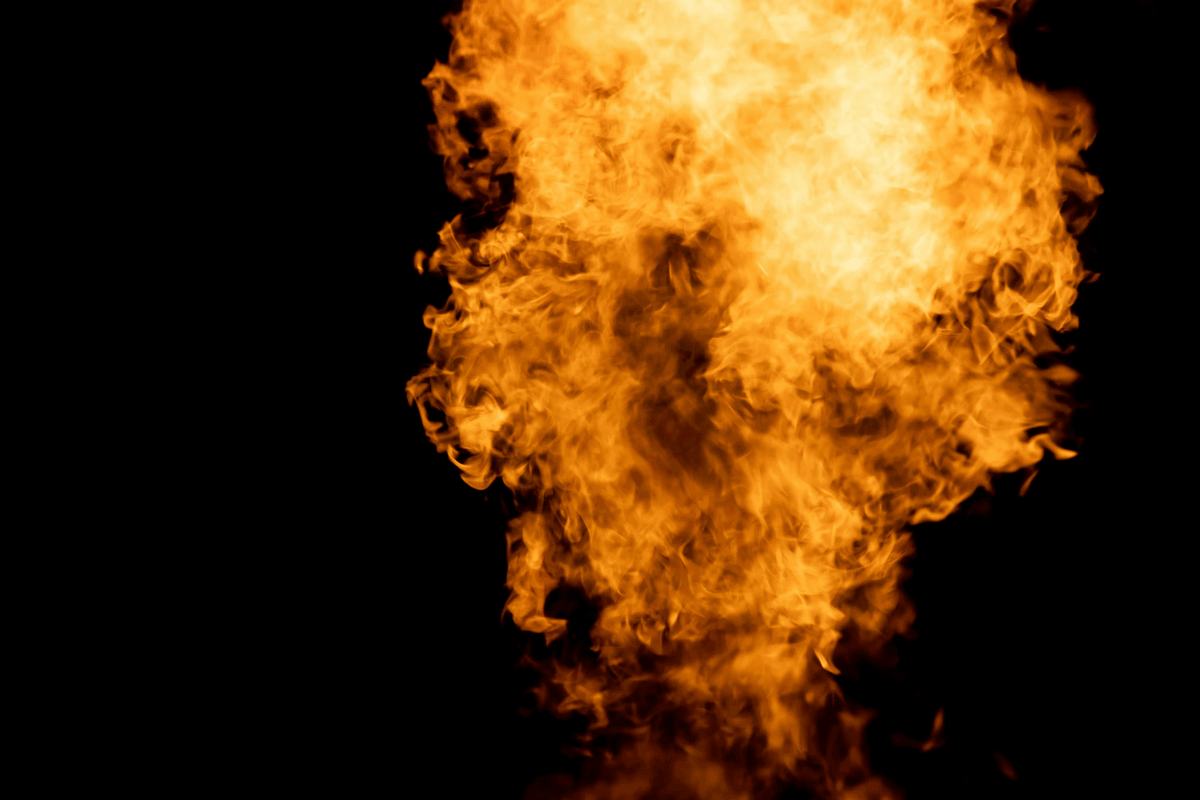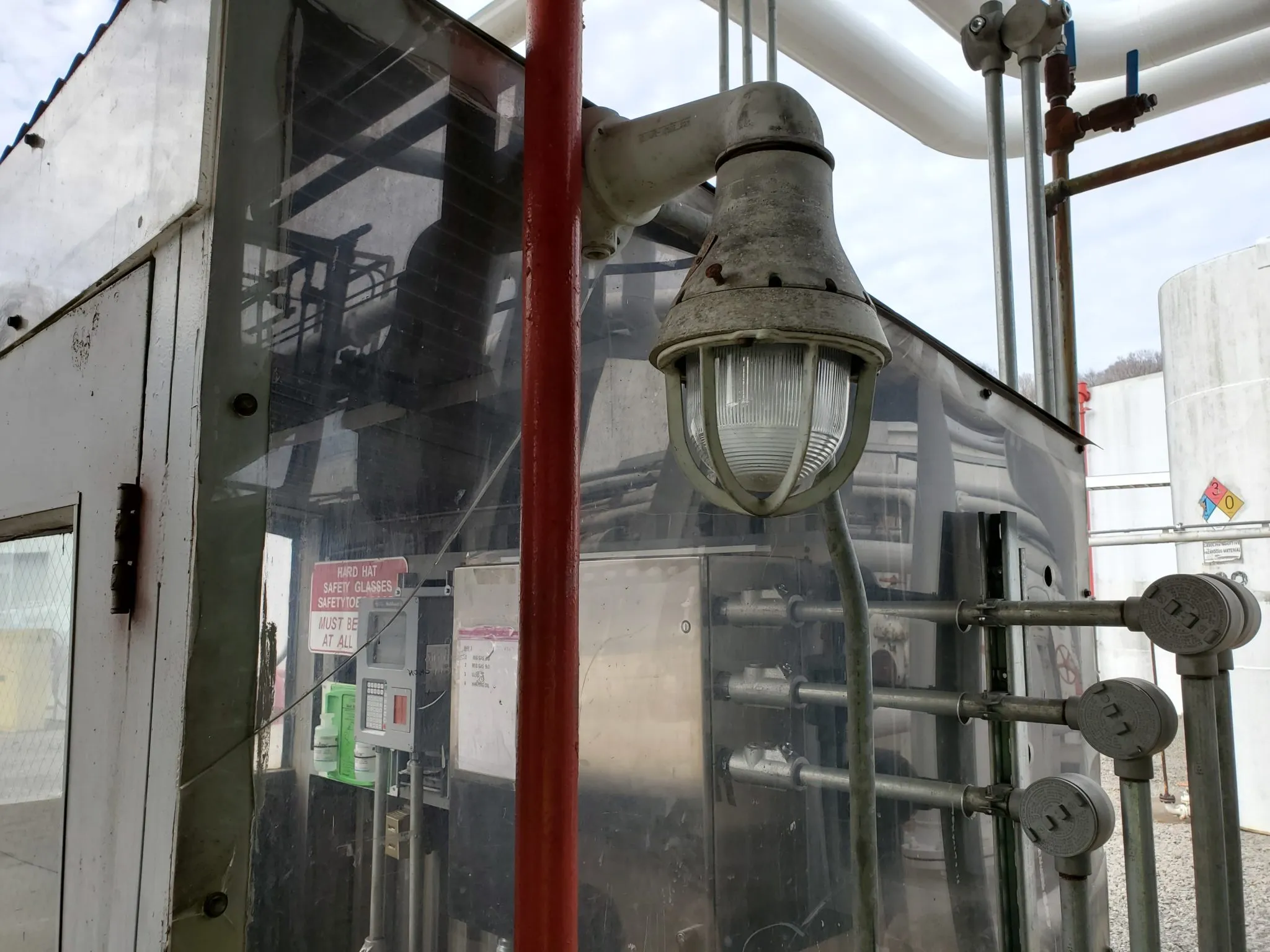Introduction

In an industrial world where safety is paramount, understanding the explosion-proof rating is crucial. This rating serves as a benchmark for determining whether equipment can safely operate in environments where flammable gases, vapors, or dust may be present. Knowing What is the explosion-proof rating? not only informs compliance but also protects lives and property.
What is the explosion-proof rating?
The explosion-proof rating refers to a classification system that indicates how well equipment can withstand explosive conditions without causing ignition. Essentially, it ensures that devices are designed to contain any internal explosions and prevent them from igniting external hazardous materials. Understanding this concept is vital for industries operating in potentially explosive atmospheres.
Importance of explosion-proof ratings in industries
Explosion-proof ratings are indispensable across various sectors such as oil and gas, chemicals, and pharmaceuticals, where hazardous materials are commonplace. These ratings help businesses select appropriate equipment that meets safety regulations while minimizing risks associated with explosions. Without proper ratings, companies could face catastrophic incidents that lead to severe financial loss and jeopardize employee safety.
Understanding the basics of hazardous areas
Hazardous areas are classified zones where flammable substances exist in sufficient quantities to pose an explosion risk under normal operating conditions. Familiarity with these classifications helps organizations implement effective safety measures tailored to specific environments. By grasping the fundamentals of hazardous areas, businesses can better navigate questions like Is ATEX explosion-proof? or Does Class 1 Div 2 mean explosion-proof? ensuring they select suitable equipment for their needs.
The Fundamentals of Explosion Proof Ratings

Understanding the fundamentals of explosion proof ratings is crucial for industries that operate in hazardous environments. These ratings serve as a benchmark for safety, ensuring that equipment can withstand potential explosive atmospheres without igniting them. Essentially, an explosion proof rating is a testament to a product’s reliability in preventing explosions, which can be the difference between safety and disaster.
Definition and significance of explosion proof rating
So, what is the explosion-proof rating? It refers to a classification system that indicates how well equipment can contain any internal explosions without allowing flames or hot gases to escape into the surrounding atmosphere. This rating is significant because it directly impacts workplace safety; industries such as oil and gas, chemicals, and mining rely on these ratings to protect workers from hazardous conditions.
The importance of understanding explosion proof ratings cannot be overstated. A proper rating ensures compliance with industry regulations while also safeguarding lives and property. When choosing equipment for potentially explosive environments, knowing the specific requirements tied to these ratings helps businesses make informed decisions.
How explosion proof ratings are determined
Determining an explosion proof rating involves rigorous testing under controlled conditions to simulate potential explosive scenarios. Manufacturers must adhere to strict guidelines set by international standards organizations, ensuring their products meet specific performance criteria before receiving certification. This process includes evaluating factors like temperature control, pressure resistance, and material durability.
The determination of these ratings is not arbitrary; it requires comprehensive analysis and documentation that demonstrate how well a product can handle hazardous situations. Additionally, regular re-evaluation ensures ongoing compliance with updated safety standards and regulations in various industries. Thus, understanding how explosion proof ratings are determined helps businesses select reliable equipment tailored for their unique needs.
Common standards and certifications
Several common standards govern explosion proof ratings across different regions and industries. In Europe, ATEX (Atmosphères Explosibles) directives play a critical role in establishing guidelines for manufacturers producing equipment intended for potentially explosive atmospheres. Meanwhile, in North America, the National Electrical Code (NEC) provides classifications such as Class 1 Division 1 or Class 1 Division 2 — but does Class 1 Div 2 mean explosion-proof?
Understanding these certifications is vital because they dictate what type of equipment can be used safely in certain environments. Other notable certifications include IECEx (International Electrotechnical Commission Explosive Atmospheres), which harmonizes international safety practices related to explosive atmospheres globally. By familiarizing themselves with these common standards and certifications related to explosion proof ratings, businesses can ensure compliance while minimizing risks associated with hazardous locations.
What is an Explosion-Proof IP Rating?

When discussing explosion-proof equipment, the term IP rating often comes into play. But what is an explosion-proof IP rating, and how does it relate to safety in hazardous environments? Understanding the intricacies of IP ratings can help industries ensure that their equipment meets necessary safety standards while minimizing risks.
Explanation of IP (Ingress Protection) ratings
IP ratings, or Ingress Protection ratings, are a standardized method for classifying the degree of protection provided by electrical enclosures against solid objects and liquids. These ratings are crucial in determining how well equipment can withstand dust ingress and moisture exposure, which is particularly important in hazardous areas where flammable materials may be present. An explosion proof rating typically works hand-in-hand with IP ratings to ensure that devices can operate safely under challenging conditions.
Relationship between IP ratings and explosion-proof equipment
The relationship between IP ratings and explosion-proof equipment lies in their shared goal: enhancing safety in potentially dangerous environments. While an explosion proof rating indicates that a device can prevent ignition of surrounding explosive gases or dust, an appropriate IP rating ensures that the device remains functional despite exposure to environmental factors like dust or water. Thus, when evaluating whether a product is truly safe for use in hazardous locations, it’s essential to consider both its explosion proof rating and its corresponding IP rating.
Key IP ratings to know
When selecting equipment for hazardous areas, certain key IP ratings should be at the forefront of your mind. For example, an IP65 rating signifies complete protection against dust ingress and low-pressure water jets from any direction—making it ideal for many industrial applications. Similarly, an IP67 rating offers even greater assurance by providing protection against temporary immersion in water; this is particularly useful when considering whether a piece of equipment meets the necessary criteria for being classified as explosion-proof.
Is ATEX Explosion-Proof?

When discussing explosion-proof ratings, the ATEX directives often come into play. But what exactly are these directives? ATEX, which stands for ATmosphères EXplosibles, is a European Union directive that outlines the requirements for equipment and protective systems intended for use in potentially explosive atmospheres. Understanding ATEX is crucial for industries where flammable gases or dust might be present, as it ensures that the equipment used can handle these hazardous conditions safely.
Overview of ATEX Directives
The ATEX directives consist of two main pieces of legislation: Directive 2014/34/EU and Directive 1999/92/EC. The first directive focuses on the equipment itself, ensuring it meets specific safety standards before being placed on the market. The second directive pertains to workplace safety and aims to protect employees from explosive atmospheres by setting out minimum requirements for improving safety in such environments.
Compliance with these directives means that equipment has been tested and certified to meet stringent explosion-proof ratings, ensuring its reliability in hazardous locations. So when you ask, Is ATEX explosion-proof? the answer is a resounding yes—ATEX-certified equipment is designed specifically to operate safely within explosive environments.
How ATEX Certification Relates to Explosion-Proof Equipment
ATEX certification plays a critical role in defining what constitutes an explosion-proof rating for various types of equipment used in potentially hazardous areas. This certification process evaluates how well products can withstand specific risks associated with explosive atmospheres, including gas or dust ignition sources. Essentially, if a product carries an ATEX mark, it signifies that it has been rigorously tested and deemed safe for use where flammable substances may be present.
In this context, understanding what an explosion-proof IP rating means becomes equally important since both certifications work hand-in-hand to ensure safety standards are met across different regions and applications. For businesses operating in industries with Class 1 Division 2 locations, knowing whether their equipment meets both IP ratings and ATEX standards can help mitigate risks significantly.
Benefits of ATEX Compliance for Businesses
The benefits of adhering to ATEX compliance extend far beyond mere regulatory requirements; they also encompass enhanced operational efficiency and reduced risk exposure. Companies that invest in explosion-proof rated equipment certified under ATEX guidelines not only protect their employees but also minimize potential downtime caused by accidents or regulatory fines due to non-compliance.
Moreover, having an explosion-proof IP rating along with proper certification can elevate a company’s reputation within its industry as a leader committed to safety and innovation. In summary, embracing ATEX compliance is not just about ticking boxes; it's about fostering a culture of safety while optimizing performance across all operations—definitely worth considering when pondering whether Class 1 Division 2 means explosion-proof!
Classifying Hazardous Locations

Understanding how to classify hazardous locations is crucial for ensuring safety and compliance in industries where flammable materials are present. One of the most recognized classifications is Class 1 Division 2, which specifically addresses areas where flammable gases or vapors may be present under abnormal conditions. This section will break down the details of this classification, clarify whether it implies an explosion-proof rating, and discuss its implications for selecting appropriate equipment.
Breakdown of Class 1 Division 2 ratings
Class 1 Division 2 refers to locations where flammable gases, vapors, or liquids are handled but are not normally present in ignitable concentrations. This means that while there is a potential for hazards, they are typically mitigated by engineering controls or operational practices. Understanding this classification helps businesses determine what types of explosion-proof equipment should be used to ensure safety and compliance with regulations.
In Class 1 Division 2 areas, you might find equipment that can withstand occasional exposure to hazardous substances without igniting them. This highlights the importance of explosion-proof ratings when selecting devices for such environments; not all equipment designed for these areas will carry an explosion-proof rating. Therefore, knowing the nuances of Class 1 Division 2 can guide companies in making informed decisions about their operational safety measures.
Does Class 1 Division 2 mean explosion-proof?
The short answer is no; Class 1 Division 2 does not automatically equate to being explosion-proof. While many devices used in these environments may indeed have an explosion proof rating, it’s essential to verify that specific product certifications meet the necessary standards for your application. An explosion-proof rating indicates that a device can contain any ignition sources within its housing and prevent external explosions from occurring due to internal sparks or heat.
To further complicate matters, some products may be suitable for use in Class 1 Division 2 areas without being explicitly labeled as explosion-proof; they might still meet other safety standards relevant to those environments. Thus, it's critical for users to thoroughly research and understand both the classification system and the specific ratings associated with their equipment before making purchasing decisions.
Implications for equipment selection
When selecting equipment for a hazardous location classified as Class 1 Division 2, understanding the nuances between various ratings is vital—especially when considering what is an explosion-proof IP rating? Companies must prioritize choosing products that comply with both industry regulations and their specific operational needs while ensuring they have an appropriate explosion proof rating.
Additionally, consulting with experts who specialize in hazardous area classifications can provide invaluable insights into which products will best suit your environment's unique challenges. This proactive approach not only enhances workplace safety but also ensures compliance with relevant standards like ATEX certification—so yes, you guessed it: Is ATEX explosion-proof? It often aligns well with these classifications!
In conclusion, navigating the complexities of hazardous location classifications requires diligence and expertise; however, thorough knowledge about terms such as “Does class 1 div 2 mean explosion-proof?” can lead you toward safer choices in industrial settings.
Choosing the Right Explosion-Proof Equipment

Factors to consider when selecting products
First and foremost, you need to assess the environment where the equipment will be used. Is it a Class 1 Division 2 area? Understanding if Class 1 Div 2 means explosion-proof is essential because not all equipment rated for this classification can handle every hazardous condition. Additionally, consider the specific materials that may be present in your work area, as different substances require different levels of protection.
Next, it's important to look into the explosion-proof IP rating of potential products. What is an explosion-proof IP rating? This refers to how well a product can resist dust and water ingress alongside its ability to withstand explosive atmospheres. The combination of both ratings gives you a clearer picture of whether a product meets your safety requirements.
Lastly, don’t overlook manufacturer certifications such as ATEX compliance when evaluating options. Is ATEX explosion-proof? Yes! Products certified under ATEX directives are specifically designed for hazardous environments and come with an assurance of quality and safety that can make all the difference in preventing accidents.
Overview of Jinrong's explosion-proof offerings
Jinrong specializes in providing top-of-the-line explosion-proof equipment tailored for various industries facing hazardous conditions. Their range includes lighting solutions, enclosures, and control systems that meet rigorous standards for explosion proof ratings while also ensuring durability and reliability in tough environments. Each product undergoes extensive testing to guarantee compliance with industry regulations like ATEX certification.
What sets Jinrong apart is their commitment to innovation without compromising on safety features—each piece of equipment reflects cutting-edge technology designed specifically for challenging environments where traditional solutions might falter. With Jinrong's offerings, businesses can rest assured knowing they are investing in high-quality products backed by solid warranties and customer support.
Moreover, Jinrong provides detailed specifications about their products' performance metrics concerning IP ratings so users understand precisely what they’re getting into before making a purchase decision—because no one wants surprises when it comes down to safety!
Importance of consulting industry experts
Navigating through the maze of regulations surrounding explosion proof ratings can feel overwhelming at times; that's why consulting industry experts is crucial! These professionals bring valuable insights into what works best based on real-world experiences across various sectors dealing with hazardous materials daily. They can help clarify questions like What is an explosion-proof rating? or “Does Class 1 Div 2 mean explosion-proof?” ensuring you make informed choices tailored specifically for your operational needs.
Furthermore, experts stay updated on evolving regulations concerning ATEX compliance or new advancements in technology related to explosion protection—information that could save you from costly mistakes down the line! Their expertise helps bridge any knowledge gaps while providing reassurance during critical decision-making phases regarding equipment selection.
In conclusion, choosing suitable explosion-proof equipment involves careful consideration beyond just meeting basic standards—it demands thorough research paired with professional guidance from those who know their stuff inside out!
Conclusion

In summary, understanding explosion proof ratings is crucial for ensuring safety in hazardous environments. These ratings not only determine the suitability of equipment but also play a significant role in compliance with industry regulations. As we have explored, knowing what an explosion-proof rating entails and the intricacies of standards like ATEX and IP ratings can help businesses make informed decisions.
Key takeaways on explosion proof ratings
The concept of an explosion-proof rating serves as a protective measure against potential hazards in various industries. It’s essential to grasp what is the explosion-proof rating and how it applies to your operations, especially when dealing with flammable materials. Additionally, recognizing that not all equipment labeled as “explosion-proof” meets the same standards will guide you toward safer choices.
How to ensure compliance and safety
To ensure compliance and safety in your workplace, it’s vital to conduct thorough assessments of your environment and understand specific classifications such as Class 1 Division 2 ratings. Many might wonder, does Class 1 Div 2 mean explosion-proof? The answer lies in evaluating equipment against recognized standards while considering factors like ATEX certification for European markets. Consulting with industry experts can further solidify your understanding and application of these crucial safety measures.
Future trends in explosion-proof technology
Looking ahead, future trends in explosion-proof technology are likely to focus on innovation and improved efficiency without compromising safety standards. The evolution of what is an explosion-proof IP rating suggests that advancements will enhance protection levels while accommodating modern industrial needs. As more industries embrace digital transformation, integrating smart technologies into explosion-proof solutions could redefine compliance protocols for even greater safety assurance.

